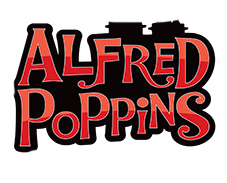All chimneys work on the same principle of something called an updraft. Some are as small as a two-inch pipe and others are so large that even Jolly Old Saint Nick and his reindeer can easily manoeuvre down them. Despite the size, they all work the same way as long as certain conditions are met.
The Updraft
Updraft is pretty much a self-describing term. It is an airflow that rises bottom to top. A pressure difference creates this updraft. This pressure difference is created by the inside of the chimney being sealed from the outside air. As the chimney rises in height, the air is forced to travel through it. As long of course if the air has a place to enter and exit. The key factor is that the chimney must be sealed from the outside along the rise. If there are breaks along the rise of the chimney, outside air will come in and the draft will not be as strong. Without this updraft a chimney will not work. In fact, in a properly constructed chimney you can feel the air pass through the opening on the intake side of the chimney.
Size and Height Makes a Difference
Chimneys must be sized in accordance of what they are passing to the outside. A sewer pipe vent may be as small as two inches in size. This is still a chimney as the sewer gas will rise out of the stack’s top. Regular chimneys must be sized so the volume of air it takes to combust the material is quickly carried out the top of the stack. The larger the particles, such as wood, the larger the opening must be to carry those gases out of the fireplace or wood heater. The higher the chimney the better it will pull the air through the inside of the chimney. Also the smoother the wall the less the resistance to air flow. A clogged chimney or one that is not smooth on the inside will create small disturbances and impede the flow of air.
Past the Roof Line
All chimneys must extend a certain distance above the roofline of a house or building. If this does occur a wind will cause the chimney to downdraft back into the house and create a reverse flow of the exhausting gas. This can be seen when a fireplace blows smoke out of the front of the opening or when a woodstove puffs back smoke. If the chimney is properly constructed and you still notice a small downdraft it may be clogged. This is also a very good indication that it may be time to have the chimney cleaned or swept as the creosote is building up inside and impeding the airflow.

